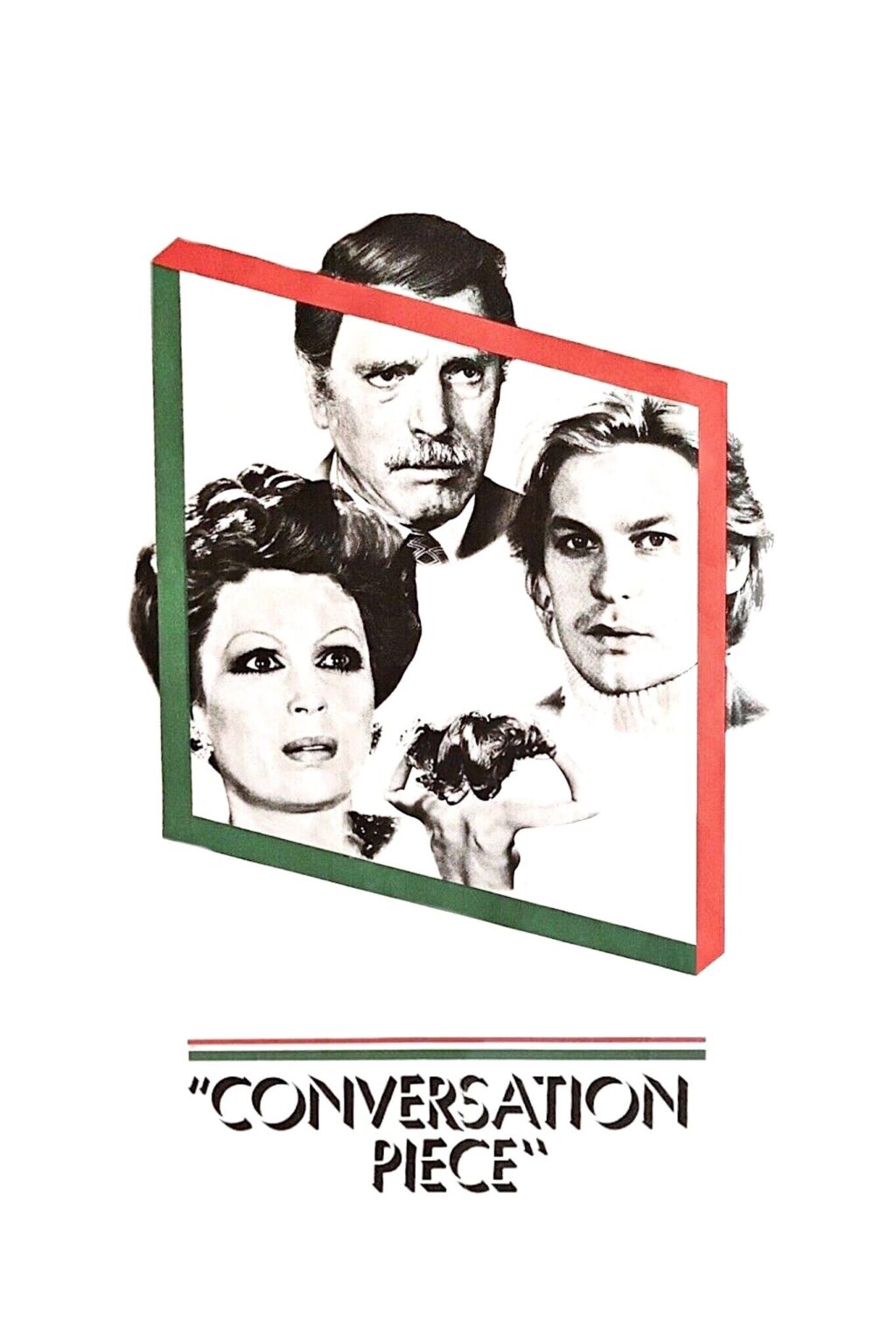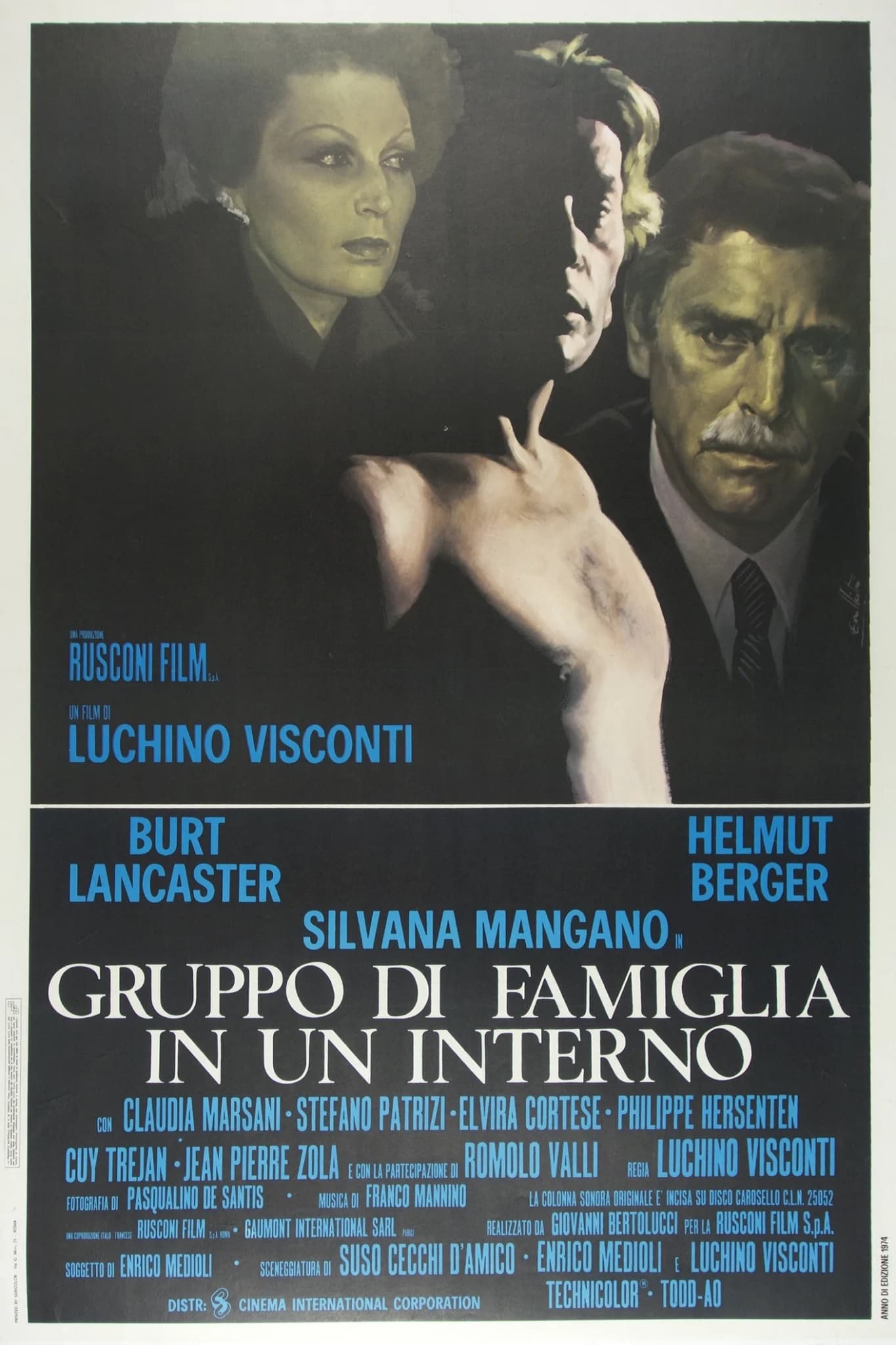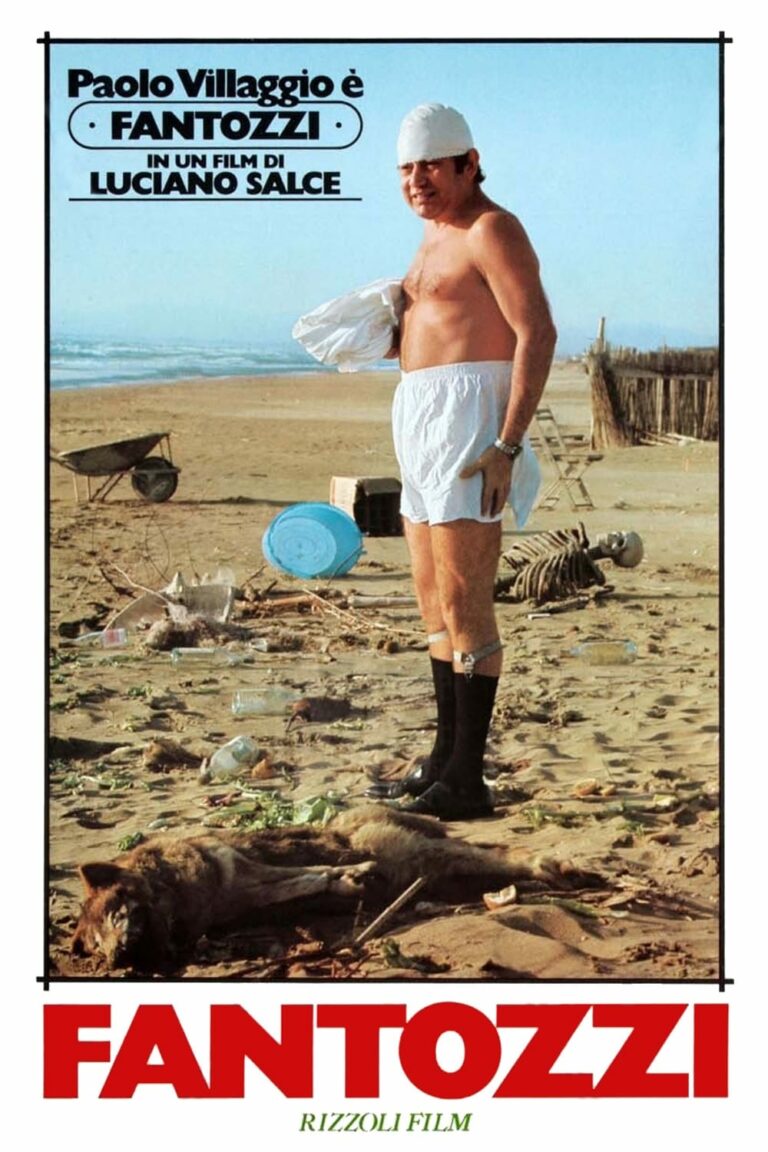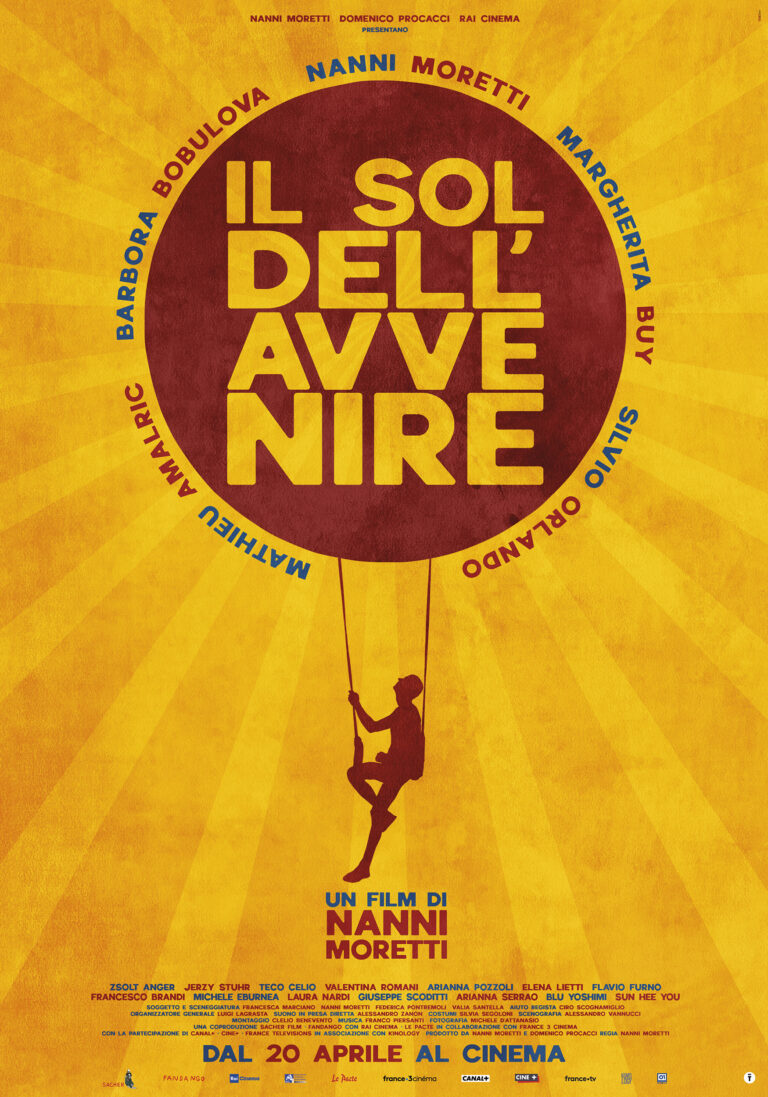
1. Introduction
Luchino Visconti’s Conversation Piece (Gruppo di famiglia in un interno) is a poignant and introspective film that delves into themes of personal decay, societal transformation, and the collision of values between generations. Released in 1974, Conversation Piece stars Burt Lancaster, Silvana Mangano, and Helmut Berger in a drama set within the confines of a single Roman apartment.
In this late-career masterpiece, Visconti moves away from his grand, operatic narratives to craft an intimate chamber piece that reflects his personal struggles and views on a changing world. The film is at once an examination of Italy’s shifting sociopolitical landscape and a deeply personal story of isolation and identity.
2. Plot Summary
Setting and Premise
The film’s title, Conversation Piece, refers to 18th-century portraiture that depicted groups of people in a domestic setting. This concept is mirrored in the film’s narrative, which unfolds almost entirely within the luxurious yet claustrophobic Roman apartment of a retired professor, played by Burt Lancaster.
The Professor, a solitary and cultured man, lives surrounded by his art collection and books, disconnected from the outside world. His quiet existence is disrupted when the Marchesa Bianca Brumonti (Silvana Mangano) insists on renting part of his apartment for herself and her unconventional entourage, including her lover Konrad (Helmut Berger) and her daughter.
Conflict and Themes
What begins as an unwanted intrusion evolves into a complex relationship between the Professor and the Marchesa’s chaotic household. The story explores themes of intergenerational conflict, cultural decline, and the search for meaning in an alienating world. The Professor’s interactions with his new tenants force him to confront his own loneliness, his disconnection from modernity, and the creeping inevitability of change.
3. Themes in Conversation Piece
Cultural Decay and Societal Shifts
The Professor represents an older generation of intellectuals devoted to art, history, and refinement, while his tenants embody the hedonism, impulsiveness, and lack of cultural roots that Visconti associated with modernity. This clash of values highlights Italy’s sociopolitical transformation during the 1970s, reflecting Visconti’s own anxieties about a world he no longer recognized.
Isolation and Interpersonal Connection
The Professor’s isolation is central to the narrative. His life of solitude, though serene, is stagnant. The arrival of Bianca’s group forces him to engage with the messiness of human relationships, leading to a reluctant but profound transformation.
Decline and Mortality
The film, made when Visconti was grappling with the physical limitations of his own declining health, is steeped in meditations on aging and mortality. The Professor’s home—filled with art that immortalizes beauty—becomes a metaphor for his attempt to resist the decay of both his body and the values he cherishes.
4. Character Analysis
The Professor (Burt Lancaster)
Lancaster delivers a masterful performance as the Professor, whose dignity and restraint conceal a deep well of loneliness and yearning. His journey is one of reluctant vulnerability, as he slowly opens himself to the messy, unpredictable dynamics of his tenants.
Marchesa Bianca Brumonti (Silvana Mangano)
Bianca is a paradoxical character—at once glamorous and manipulative, she represents the moral and cultural decay that the Professor disdains. Yet, her presence serves as a catalyst for his self-discovery.
Konrad Huebel (Helmut Berger)
Konrad, Bianca’s younger lover, is a symbol of modern hedonism and rootlessness. His volatile relationship with Bianca and his interactions with the Professor reveal layers of vulnerability beneath his outward arrogance.
5. Visconti’s Directorial Vision
Visconti, an aristocrat with Marxist leanings, imbues Conversation Piece with his signature blend of personal introspection and social critique. The film’s intimate setting contrasts with the opulence of his earlier works like The Leopard, but the meticulous attention to detail remains. Every frame of the Professor’s apartment reflects his character—a shrine to order, tradition, and aesthetic perfection.
Visconti’s own declining health during production adds a layer of poignancy to the film. Confined to a wheelchair after a stroke, the director poured his existential anxieties into the narrative, making Conversation Piece a deeply personal work.
6. Cinematic Techniques
Cinematography and Visual Style
The film’s visuals emphasize the contrast between the Professor’s orderly world and the chaos introduced by his tenants. Cinematographer Pasqualino De Santis uses warm lighting and rich textures to evoke a sense of timelessness within the Professor’s home, while the intruders bring a more erratic, disjointed energy to the space.
Set Design as a Metaphor
The Professor’s apartment, filled with art and books, serves as an extension of his character. The gradual disruption of this space mirrors his internal transformation, as he comes to terms with his mortality and the impermanence of his values.
Music and Sound Design
Franco Mannino’s score underscores the film’s emotional depth, blending melancholy and tension to reflect the Professor’s inner turmoil. The music transitions seamlessly between moments of quiet reflection and the chaotic energy of Bianca’s group.
7. Reception and Legacy
Critical Reception
Upon its release, Conversation Piece received mixed reviews. While critics praised Burt Lancaster’s performance and Visconti’s direction, some found the film’s pacing too slow and its themes overly melancholic. However, the film has since been reappraised as one of Visconti’s most personal and profound works.
Impact on Cinema
Conversation Piece is often seen as a companion piece to Visconti’s earlier films, offering a more introspective exploration of themes he had addressed in grander narratives. Its intimate scale and focus on character dynamics influenced later chamber dramas.
8. Symbolism in the Film
The Apartment
The Professor’s home is a microcosm of his identity—both a sanctuary and a prison. Its eventual disarray symbolizes his reluctant acceptance of change.
Art as a Reflection of Life
The artworks that surround the Professor serve as reminders of his fading ideals. They also act as silent witnesses to the unfolding drama, highlighting the tension between permanence and impermanence.
Generational Conflict
The clash between the Professor and Bianca’s group symbolizes the broader generational divide of the 1970s, as traditional values gave way to more hedonistic, consumer-driven lifestyles.
9. Frequently Asked Questions (FAQs)
1. What is the meaning behind the title Conversation Piece?
The title refers to a style of painting depicting intimate domestic scenes. It reflects the film’s focus on interpersonal dynamics within a confined setting.
2. How does Conversation Piece reflect Visconti’s personal life?
The film is deeply autobiographical, mirroring Visconti’s struggles with aging, isolation, and his disillusionment with modernity.
3. What are the main themes of Conversation Piece?
Key themes include cultural decline, isolation, mortality, and the clash between tradition and modernity.
4. Is Conversation Piece connected to Visconti’s other works?
While it stands apart in its intimate scale, the film shares thematic similarities with Visconti’s other explorations of decline and identity, such as The Leopard and Death in Venice.
5. Where was the film shot?
The film was primarily shot on soundstages in Rome, with meticulous attention to recreating the Professor’s apartment as a character in itself.
6. How was Burt Lancaster’s performance received?
Lancaster’s portrayal of the Professor was universally praised for its subtlety and emotional depth.
10. Conclusion
Conversation Piece is a masterful meditation on identity, decline, and the inevitability of change. Visconti’s intimate narrative and nuanced characters create a deeply personal work that resonates with universal themes. Though understated compared to his grander films, Conversation Piece remains a vital part of Visconti’s legacy—a testament to his ability to capture the complexities of human experience.






